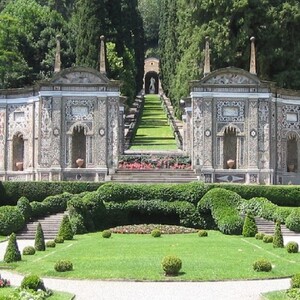Smell fragrant and foul scents of the 17th century at this Dutch art exhibitionAndrea Smith
A Dutch exhibition about fragrant and foul odors in the 17th century will pair various historic scents with paintings to bring them to life. Fleeting – Scents in Colour will open at the Mauritshuis in Den Haag as soon as the museum reopens following closures due to COVID-19.
The museum is endeavoring to undertake smell-historical research through the exhibition, which contains almost 50 paintings, drawings and objects. Visitors can expect to encounter the aromas of scented flowers and perfumes, foul-smelling canals and unpleasant body odors, as well as scents from far-away lands at the time, such as spices, tobacco, coffee and tea. The idea is to see whether life in the 17th century can be captured in smell, and to investigate sensory perception and the aromatic connotations that artworks have.

In Abraham Mignon’s Still Life of Flowers and Fruit from 1670, the artist combines a rich abundance of flowers with overripe fruit that ants and other insects have descended on, attracted by the sweet scent of the melon that has been cut open. Pieter de Hooch’s Interior with Women in front of a Linen Cupboard from 1663 symbolises the Dutch housewife known throughout Europe for her immaculately clean house in the 17th century. Scent dispensers will enable visitors to take in the different smells portrayed in the art.
Visitors can breathe in the aromas like that of the subject in Adriaen Brouwer’s The Smoker from 1630, where a man sits back enjoying his pipe, exhaling the smoke. The 17th century was also full of foul smells, as mains water, sewer systems, deodorant, toothpaste, washing machines and fridges were not yet in existence, with all the inherent consequences.
It was believed at the time that vile smells made you ill, and therefore needed to be supressed with disease-repelling fragrances. In The Anatomy Lesson of Dr Willem van der Meer, painted in 1617 by the Delft painters, Michiel and Pieter van Mierevelt, the subject is holding a pomander, which he wears on his finger from a ring and chain. A pomander was a perforated container filled with highly aromatic substances, and there are three of them on dispay in the exhibition.
Fleeting – Scents in Colour will open when the Mauritshuis reopens to the public and will run until 29 August. Further information is available here.
You might also like:
The art of Van Gogh and David Hockney comes together in Houston
This Spanish contemporary art museum has a stylish new expansion
The Uffizi Gallery will spread its famed art collection across Tuscany
The post Smell fragrant and foul scents of the 17th century at this Dutch art exhibition
appeared first on Lonely Planet Travel News.











